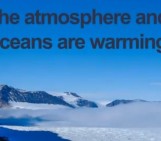
Scientific uncertainty is one of the only things in science that is certain. It’s found in complex modelling systems, in the unpredictability of natural processes and even when there seems to be scientific consensus, a new scientific discovery can recreate ambiguity.
But how do policymakers deal with scientific uncertainty when they are making decisions?
Policymakers deal with and use scientific uncertainty to different degrees and from different angles. For example, policymakers who determine the budget must deal with the uncertainty in economic fluctuations, city planners must account for the possibility of floods and those making decisions about carbon emission targets must evaluate the risks of climate change.
How policymakers deal with uncertainty often depends on how their government institution views it. The European Union, for example, is committed to following the Precautionary Principal. The Precautionary Principal reverses the burden of proof for things that are perceived as potentially risky. This means that rather than having to prove that something is dangerous before it’s regulated, those in favour must prove (beyond reasonable doubt) that it is safe before it’s permitted. The Precautionary Principal can range from environmental policy to legislation regulating AI and essentially boils down to, better safe than sorry [1].
While the Precautionary Principal can be used as a guideline, there still isn’t a set of instructions for policymakers to use that indicate how every issue should be handled politically and administratively. As a result, decisions are often made based on the perceptions of both the politicians and the public that they represent.
For this reason, how policymakers respond to uncertainty is not only determined by whether their institution follows the Precautionary Principle but also on how well the scientific uncertainty is communicated. Which leads us to the question:
How can scientists communicate scientific uncertainty in a way that is accurate, meaningful and useful to policymakers?
Firstly, to most scientists, uncertainty is how well something is known. It demonstrates transparency and whether particular phenomena are understood. However, to the general public and some policymakers, uncertainty means not knowing. It is important to make this distinction if you are presenting your research or even speaking about it more generally!
The next thing you should consider is your target audience – who will be reading your research and what will they be using it for. Once you’ve figured this out, you’ll need to simplify your results by reducing the information that is not relevant to the decision or policy. While this may be a painstaking task, it allows the pertinent issues to be highlighted and increases the likelihood that they will be considered in-depth.
A step further would be to also outline the potential policy options that can be taken and what the ramifications (both positive and negative) of each choice are. While this step may not make sense for research that is unsolicited, it is sometimes taken on by scientists who are undertaking research commissioned by a governing body.
Minimising uncertainty often requires additional research and therefore time. Unfortunately, legislation and policy debates generally run to a [relatively] strict deadline meaning that policymakers are required to make the best decision possible with the information available. As a result, flexibility and a willingness for the researcher to accept and outline greater scientific uncertainty is likely to be necessary [2].
Uncertainty is handled better when scientists engage more with policymakers and the public [3]. Following-up with discussions and answering questions about your research will help to ensure that the scientific uncertainty is understood and acted on accordingly. Not only this but it will help you better understand what aspects of your work are most of interest to policymakers and where further research is needed.
Lastly, communicating uncertainty to both policymakers and the public is a skill that cannot be completely covered in just one short blog post! If you would like to communicate your research’s scientific uncertainty with non-scientists, it is definitely worth taking the time to read some of the extensive resources that cover the topic and that can be found online.
Sources and further reading
- FUTURE BRIEF: The Precautionary Principle: decision-making under uncertainty
- Communicating scientific uncertainty
- Dealing with Not Knowing: Evaluating and Communicating Uncertainty at the Science/Policy Interface
- Uncertainty in science and its role in climate policy
- Dealing with Uncertainty in Policymaking




